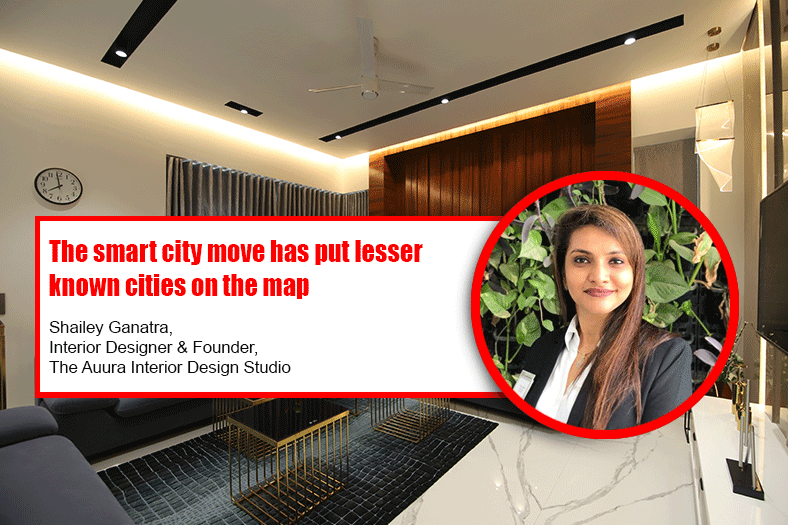The smart city move has put lesser known cities on the map

I think the initiative will continue to remain a success if its implementation continues in the right direction, which means basics like housing, sanitization and electrification have to be addressed, says Shaily Ganatra, Interior Designer & Founder, The Auura Interior Design Studio.
Considering that it has been more than half a decade, how happy are you with the progress we have made in The Smart City Initiatives?
One of the main objectives of the smart city initiatives, I like to believe, is to create homes which are sustainable as also driven by technology. We are currently in a period where humankind is just barely teetering on the precipice of a huge technological revolution, and I can see that the government of India has made great strides to ensure that the fruits of technology can be accessed by the general public. Besides attempting to scale up urbanization the smart city initiative has also helped put tiny, and relatively unknown cities on the map. There has been a proactive and positive reaction from the public, which only further cemented my opinion on how this has been a great initiative taken by the government.
According to you, what kind of measures are needed to ensure this initiative continues to succeed? There are a lot of elements to be taken care of right from precise planning and design of the smart cities to its execution. I think the initiative will continue to remain a success if its implementation continues in the right direction, which means basics like housing, sanitization and electrification have to be addressed. For building such cities, it is necessary to invoke localisation too, the raw materials and labour should be sourced locally as it will help boost the city’s economy and generate employment. It is essential that the centre, state, and local governments work together to boost the living conditions of people in these future smart cities and ensure it remains self-reliant in the long run.
In the wake of the pandemic, what are some of the features that the smart cities need to incorporate?
Diseases shape the way the world will move forward, and it has a direct impact on how the cities will grow. Smart Cities need to have a comprehensive and foolproof digital framework so that people remain connected to their family and have access to emergency services especially in times of emergency. Public services and local government should have proper digital channels to disseminate updated information on a day to day basis. Secondly, open spaces need to be accessible to the general public. With the lockdowns, when people get tired of sitting at home, they flock to their local parks, and they need to be maintained and taken care of so that the citizens can enjoy their benefits. Lastly, with social distancing and the lockdown, a large chunk of the working-class population have become homeless overnight. Smart cities need to build affordable, clean, and safe houses for everybody living in a city so that the transmission of the virus is contained.
Is any effort being made to make our existing public transportation systems smarter and ensure it is not overcrowded which is usually the case?
As the usage of public transportation has reduced significantly, it is time to think about its viability and for governments to plan for future contingencies like this one. There needs to be a greater investment in the building of public transport so that life does not completely come to a screeching standstill. It is imperative to differentiate between a lockdown and a gridlock, and if the latter happens, it will be nearly impossible to re-open the city. Sanitization measures, as well as regular disinfection of public transport, have to occur while keeping prices low (temporarily) and adhere to strict capacity regulations to build a smart city brick by brick.
People make cities smarter having said that what impact will smart cities have on the lives of its occupants?
The basic idea behind a smart city is all about being accessible to the public as well as being functional. At the same time, a smart city also needs to have a certain aesthetic appeal that will make it a joy to live in. There needs to be a symbiotic relationship between the city and the inhabitants.
Cookie Consent
We use cookies to personalize your experience. By continuing to visit this website you agree to our Terms & Conditions, Privacy Policy and Cookie Policy.










